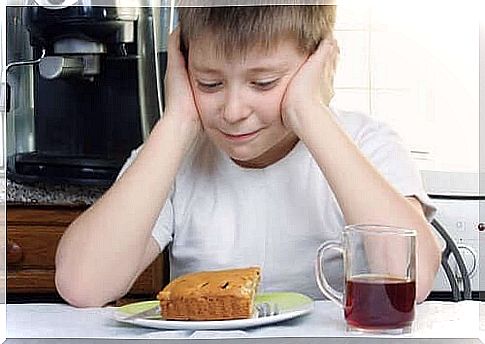What Does It Mean To Have Selective Eating Disorder?

Selective eating disorder is a condition children often suffer from. This is when a person does not eat certain foods or only eats a handful of foods due to a whim. It can cause many future problems, such as anorexia or bulimia. Find out more about this disorder in this article.
What is selective eating disorder?

This is a disease that begins in childhood and causes them to avoid or reduce their intake of certain foods.
Even if it starts as an accepted behavior of the parents (or even a behavior instilled in them so that they do not have problems when it comes to cooking or that they do not have to waste time, and they therefore let them choose their own food), it can cause many problems in the child’s development.
Related to whimsy or bad behavior, selective eating disorder causes children to eat only what they want. They thus do not accept food that “they do not like”.
In most cases, “approved” meals are burgers, fries, pastries and pizza. “Unapproved” foods are fruits and vegetables.
Many children eat junk food and will never try broccoli, apples or lentils.
It should be noted that this disorder results in malnutrition due to the fact that the child does not get enough vitamins, proteins and nutrients that the body needs.
Selective eating disorder can be “masked” in the child’s perceived freedom to eat what they like. Even if the child does not want to eat fruit, the child should do so for his own sake and to achieve better development and growth.
A person’s future depends on what they eat in childhood. A child who is a “picky” eater will often have poor academic results, often become ill and will be short.
Selective eating disorder is a psychological problem

This disorder is automatically associated with a nutritional problem and lack of nutrients. However, it can also be associated with bulimia and anorexia because it is a syndrome that requires medical attention.
Because of this, it is necessary for children who refuse to eat certain foods, even if their parents insist that they eat, to visit a therapist. A nutritionist or pediatrician should also evaluate the child.
Children use this food choice to express themselves or communicate. “Between the lines” is a core problem that must be solved.
Crying in front of a plate of cabbage, spitting out food if it contains carrots or screaming during dinner are all behaviors that tend to be stressful for parents. Since they do not want to see the children suffer , they choose to only give them the foods they accept. Although the parents’ attitude and intentions are good, they actually hurt the children more than they think.
The problem will escalate and in a short time your child will only eat two or three things.
How do you detect selective eating disorder in your child?

It is more common in boys than in girls. In addition to not eating certain foods, some other symptoms also occur:
- Anxiety problems
- Social isolation
- Compulsive moves
- Low adaptability
- Irritability and mood swings
- Uncontrolled crying
- Malnutrition and weight loss
- Slow development or growth
What is the reason for this? How to prevent it?

One way to express dissatisfaction, get attention or ask for affection is by pushing away food or crying during meals. Stress, trauma or lack of parental care also triggers this problem.
However, overprotection can also cause this disorder. Children who do not accept “no” as an answer and do what they want can suffer from this disorder. Other causes of this syndrome are: not having established rules or boundaries as well as to compensate for the lack of attention or time of permissiveness or gifts.
To prevent ” I do not like this “, ” I do not eat this” or “I do not want this ” during the dinner, parents or guardians must be good and patient.
When they say “no” the first time, it is not very helpful to threaten them or say things like ” You should eat this because I say so”.
It is good to know that children imitate their parents and the adults around them.
What should one do?

Therefore, if the mother, father or older brother pushes food on the plate or says that they do not like certain foods, the child will certainly reject the same food.
The family diet must consist of all kinds of ingredients and if one of the parents needs a different menu, for example, you should either involve the child in this process or exclude the child completely from the conversation.
Trying different recipes, preparing fun and colorful dishes as well as encouraging them to help you cook are great ways to teach kids to eat all kinds of food.
Offering them fruits and vegetables from a very young age and not always feeding them carbohydrates, fats and sugars helps them improve their health, achieve better development and avoid eating disorders.









